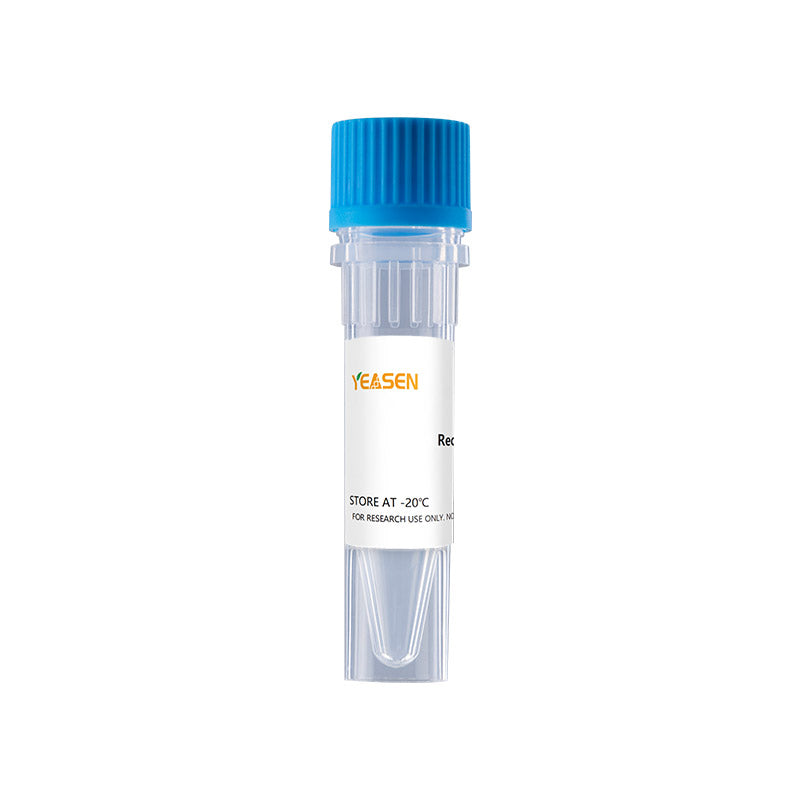Description
Fatty acid binding protein-2 (FABP-2; also named I- or intestinal FABP) is a member of a large superfamily of lipid binding proteins that are expressed in a tissue specific manner. FABP-2 is one of nine cytoplasmic FABPs that are 14-15 kDa in size and range from 126-134 amino acids (aa) in length. Although all are highly conserved in their tertiary structure, there is only modest aa identity between any two members. Nevertheless, based on aa sequence, the nine FABP family members have been shown to form three subgroups, with FABP2/IFABP linked with liver/L-FABP and heart/H-FABP. The designation of a tissue type, such as intestinal, does not suggest the binding protein is universally expressed in all cell types that make up the organ or tissue. Human I-FABP, the product of the FABP-2 gene, is a 132 aa cytosolic protein that shows a flattened beta -barrel structure (called a beta -clam) generated by a series of antiparallel beta -strands and two alpha helices. Preferred ligands for FABP-2 include sixteen to twenty carbon long chain fatty acids. It is suggested that ligands first bind to the outside of the molecule, and this binding subsequently induces a conformational change in the binding protein, resulting in "internalization" of the ligand. An Ala-to-Thr polymorphism at position #54 has been reported to potentially impact FABP-2 function. This polymorphism has been suggested to be associated with an increased risk of type II diabetes. To date, the evidence appears to be equivocal. This polymorphism may, however, have unusual metabolic effects depending upon the type of diet involved. Human FABP-2 is 78%, 82% and 86% aa identical to mouse, rat and canine FABP-2, respectively. It also shows 33% and 24% aa identity to human H-FABP and LFABP, respectively. FABP-2 is proposed to transport fatty acids (FA) into cells, increase FA availability to enzymes, protect cell structures from FA attack, and target FA to transcription factors in the nuclear lumen.
Product Properties
|
Synonyms |
IFABP; I-FABP |
|
Accession |
P12104 |
|
GeneID |
2169 |
|
Source |
E.coli-derived Human FABP2, Ala2-Asp132. |
|
Molecular Weight |
Approximately 15.1 kDa. |
|
AA Sequence |
AFDSTWKVDR SENYDKFMEK MGVNIVKRKL AAHDNLKLTI TQEGNKFTVK ESSAFRNIEV VFELGVTFNY NLADGTELRG TWSLEGNKLI GKFKRTDNGN ELNTVREIIG DELVQTYVYE GVEAKRIFKK D |
|
Tag |
None |
|
Physical Appearance |
Sterile Filtered White lyophilized (freeze-dried) powder. |
|
Purity |
> 97 % by SDS-PAGE and HPLC analyses. |
|
Biological Activity |
Data Not Available. |
|
Endotoxin |
< 0.1 EU per 1μg of the protein by the LAL method. |
|
Formulation |
Lyophilized from a 0.2 µm filtered concentrated solution in PBS, pH 7.0. |
|
Reconstitution |
We recommend that this vial be briefly centrifuged prior to opening to bring the contents to the bottom. Reconstitute in sterile distilled water or aqueous buffer containing 0.1% BSA to a concentration of 0.1-1.0 mg/mL. Stock solutions should be apportioned into working aliquots and stored at ≤ -20℃. Further dilutions should be made in appropriate buffered solutions. |
Shipping and Storage
The products are shipped with ice pack and can be stored at -20℃ to -80℃ for 1 year.
Recommend to aliquot the protein into smaller quantities when first used and avoid repeated freeze-thaw cycles.
Cautions
1. Avoid repeated freeze-thaw cycles.
2. For your safety and health, please wear lab coats and disposable gloves for operation.
3. For research use only!
Payment & Security
Your payment information is processed securely. We do not store credit card details nor have access to your credit card information.
Inquiry
You may also like
FAQ
The product is for research purposes only and is not intended for therapeutic or diagnostic use in humans or animals. Products and content are protected by patents, trademarks, and copyrights owned by Yeasen Biotechnology. Trademark symbols indicate the country of origin, not necessarily registration in all regions.
Certain applications may require additional third-party intellectual property rights.
Yeasen is dedicated to ethical science, believing our research should address critical questions while ensuring safety and ethical standards.

